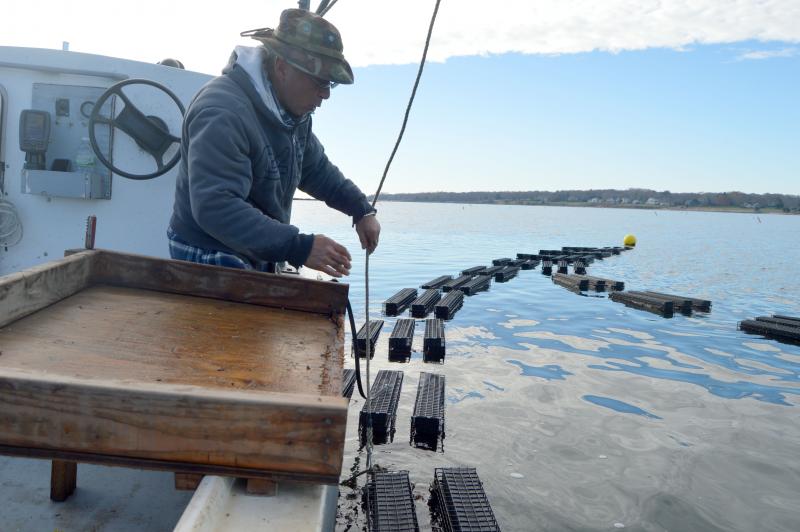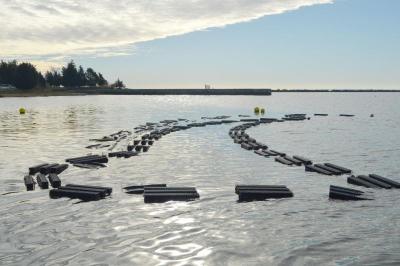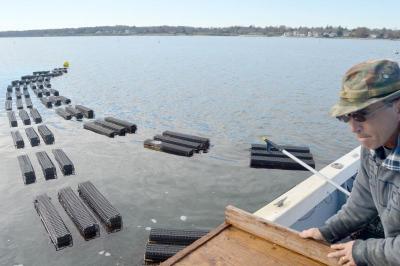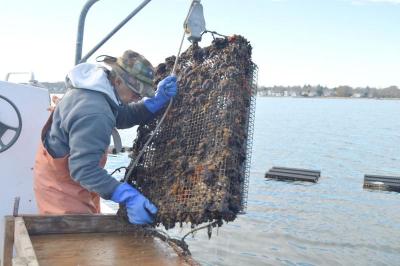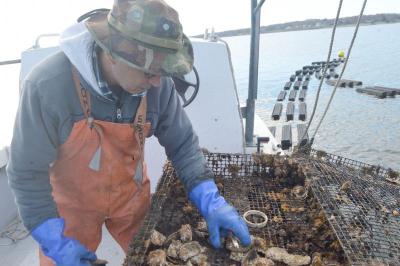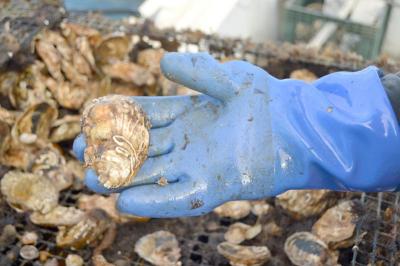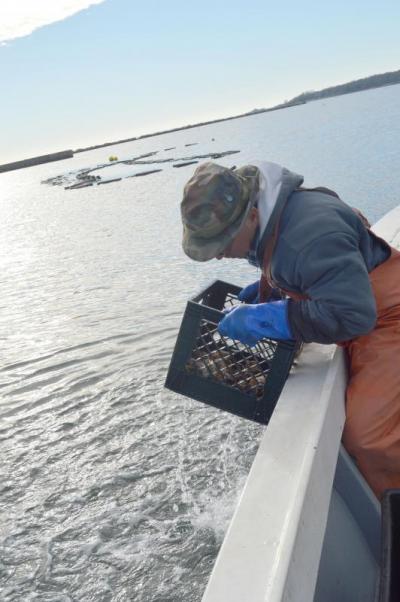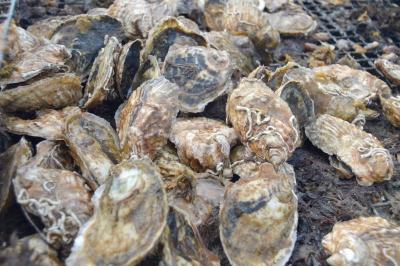The first oyster farm in Dartmouth has successful first season
The moment Steve Caravana pops open one of his oyster cages, it’s apparent that his foray into aquaculture has become a booming business. His oyster farm also happens to be the first established in town.
Caravana, who started his farm this past spring, was told to expect low numbers during his first year of operation. However, his business has been such a big hit that his distributer, Island Creek Oysters, has been shipping his mollusks around the country, including Florida, Texas and California.
He’s worked as a fisherman and lobster trapper periodically throughout his life, but Caravana currently works full-time as a health facility inspector for the Department of Public Health. When he became interested in working on the water again, he hit a major roadblock. Dartmouth didn’t have a precedent for an oyster farm.
“I put in an application with the town for an aquaculture permit. They had no regulations. No one had ever done it before. They didn’t know what to do,” said Caravana.
“We didn’t have a regulatory structure for aquaculture,” said Town Administrator David Cressman. “With the support of the Select Board, a subgroup of people worked out a set of regulations.”
Starting in 2011, the committee looked at oyster farming in surrounding communities and used that as the basis for bringing oysters to town.
“We suited our regulations to the Dartmouth waterfront, knowing the limitations we had,” said Harbormaster Steve Melo.
Melo and Caravana both had learned about aquaculture through Roger Williams University, which helped when it came time to develop policy around the operation.
“There are a lot of areas in Dartmouth that are closed, or they’re conditional, like north of Padanaram bridge. They’re only open certain times of the year,” said Melo. “The state will not allow an aquaculture project in an area that’s either closed or conditional.”
Caravana’s farm, which is only accessible by boat, floats in the southeast corner of outer Padanaram Harbor. He received his permit in fall of 2014, and decided it was too late in the year to begin business, so he waited until 2015.
“I grow my oysters in floating cages on the top of the water column. They grow phenomenally. It’s been more successful than I ever thought,” said Caravana.
He started out by placing thousands of seed oysters in his cages in May. The seeds were then allowed time to absorb nutrients from the water and mature. Melo, who helped with the early stages of the farm’s establishment, said the seeds were about the size of a thumbnail.
When the oysters are three inches wide, they become marketable and are ready for harvest. Caravana’s oysters were ready in early August.
Harvesting is a labor-intensive process. Caravana carefully positions his work boat, the Kimberly Jean (named after his wife), next to the rows of cages. The cages are topped with three strips of buoyant material and partially submerged beneath the surface of the water. The cages are tethered together in strings of 20 with an anchor at each end.
Caravana isolates one cage by connecting the two surrounding cages to his boat with rubber bungee cords. He unties the desired cage and hoists it onto his boat with a rope pulley.
The cage pops open like a treasure trunk, revealing a pile of oysters contained within. Using a small knife, he scrapes off sea grasses and abnormalities on the shells.
“I don’t think it’s as complicated as it sounds, but it is a lot of work. But once everything’s in place, things are like clockwork,” said Caravana.
When the water is below 50 degrees, the oysters stop growing and go dormant. Carvana said he intends to harvest through the holidays and will stop around the New Year.
“His success is nothing short of miraculous in the scheme of things,” said Melo. “He has had a successful first growing season, and that doesn’t happen often.”



